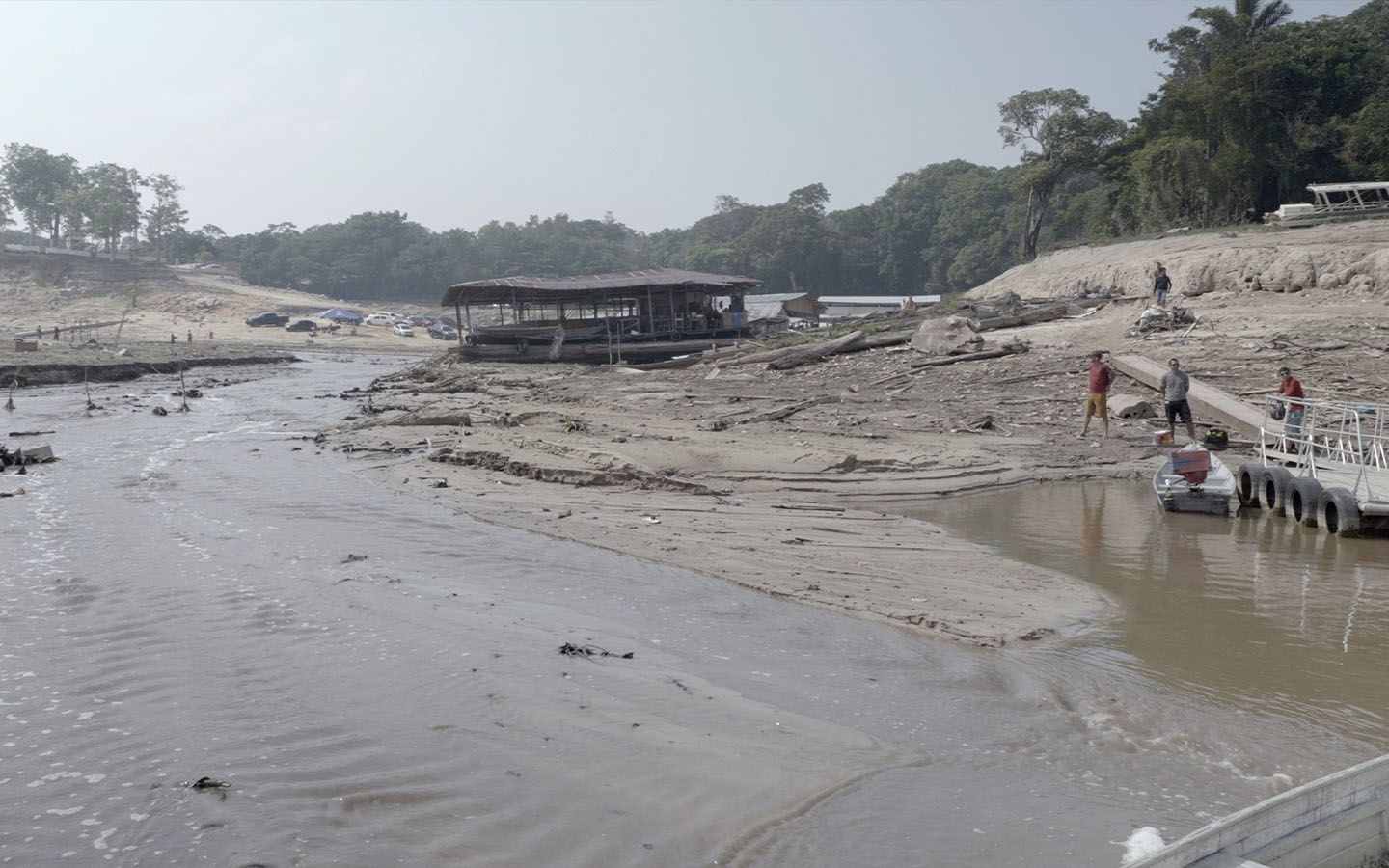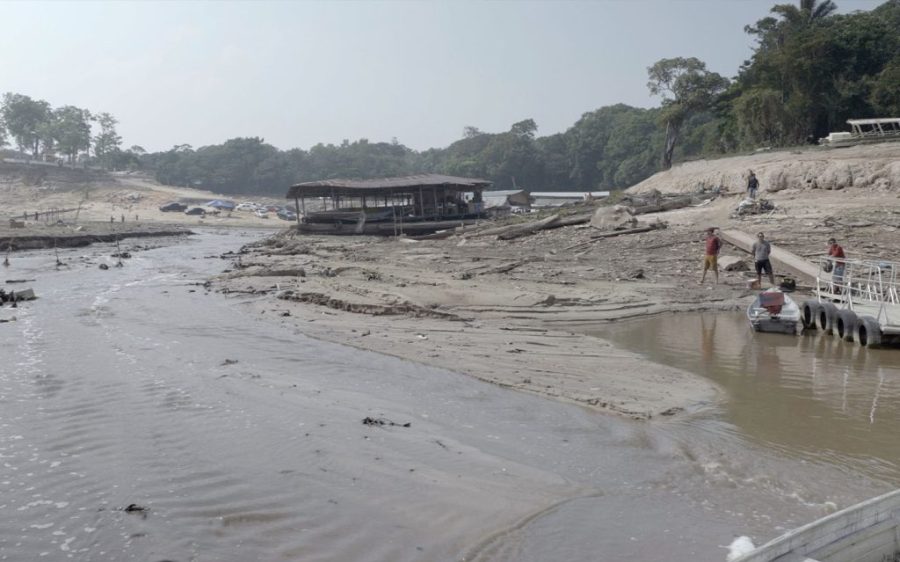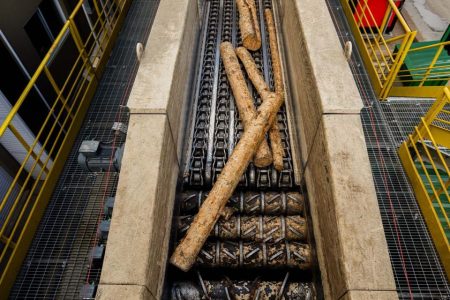A major port along the Rio Negro saw water levels drop to the lowest point ever recorded, Brazil’s geological service announced Friday, a consequence of severe drought plaguing the region for the second year in a row.
Located in the largest city in the Amazon rainforest, the port of Manaus recorded the river at just 12.66 metres on Friday, as compared to the normal level of about 21 metres. It is the lowest point since record keeping began in 1902, breaking the previous record set just last October. Normal water levels fluctuate with the rainy and dry seasons, but the severity of the dry season this year has been far worse, putting all the major rivers in the Amazon basin at critical levels.
Authorities expect the Rio Negro will continue receding until the end of this month, as forecasts indicate low rainfall in areas upstream of Manaus.
[See more: A drought in the Brazilian Amazon will affect half a million people]
With the rainy season proving weaker than normal, many of the impacts of last year’s drought are likely to repeat or reach new extremes. The drought in 2023 triggered a humanitarian crisis as communities that relied on rivers for travel and importing goods were left without food, water or medicine. This time the government is on high alert. At least 62 municipalities in the hard-hit state of Amazonas are under a state of emergency with more than half a million people affected.
Residents in Manaus are already feeling the effects as floating markets close and they are forced to travel farther to find water. Grain shipments have halted in another Amazon tributary, the Madeira River, due to low water levels and even hydropower plants are feeling the squeeze. With drought sapping the country’s main power source, authorities approved bringing back daylight savings time in an effort to protect against blackouts but the measure still needs presidential approval.
Much of South America is facing similar difficulties as below-average rainfall – including during the rainy season – has plagued the region since last year. The Paraguay River, for example, hit its lowest level in more than a century due to severe drought in Brazil’s Pantanal, the world’s largest wetland. The same drought is fuelling devastating wildfires in the Pantanal and Amazon rainforest. Neighbouring Bolivia is on track to break a record for the most wildfires ever recorded. Researchers name climate change as the main culprit for these disasters.






